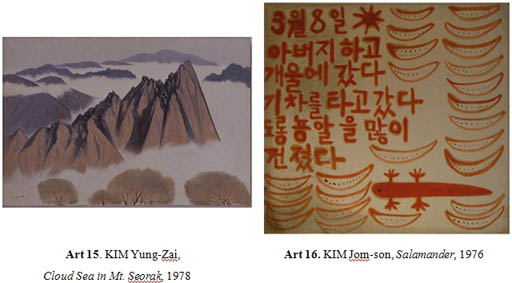Artworks
1. KIM Tschang-yeul’s Works
This museum collected five works by KIM Tschang-yeul, who is a master artist in Korean contemporary art. We already have 12 pieces of his work from various periods of his art world, but we only had a few pieces of his early and later work. We only had one piece of his that reflects the influence of ‘Informel,’ so a collection of two works from this period is of great significance in our collection.
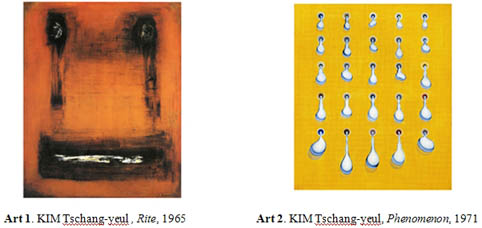
Starting in the 1970s KIM Tschang-yeul started his trademark series of works entitled, ‘Water Drop’, Until 2009, the museum had six pieces related to that series—two pieces from the 1970s, which show the influence of monochrome; three pieces from the 1980s, which show dissimilar elements on canvas; and one piece from the 1990s in which thousand character (Chinese Letters) start to appear. This time, the museum has acquired one precious piece of his work (1971), which clearly shows how his work ‘Water Drop’ was born. At the same time, we also collected two large pieces of his work from the 1990s, as we did not have enough pieces for viewing his later period of works from various angles.
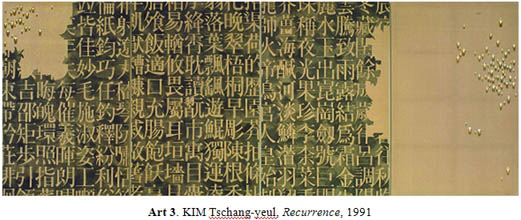
2. Kimsooja’s Works, A Needle Woman
Last year, the museum collected Kimsooja’s representative work entitled, A Needle Woman Until then, we only had his early works (1991), which were created in a collage format made of cloth. This A Needle Woman is a large work of art that took three years to create (starting in 1999), and it consists of 8 channels As a result, two different organizations had possessed four channels of the work separately, but the museum was able to collect all eight of the pieces for the first time in the world, and we can now display them all at once in one place. (Each channel shows a video of Tokyo, Shanghai, Delhi, New York, Mexico City, Cairo, Lagos, and London, respectively. The images on eight channels start at the same time, and end simultaneously. (All of the videos take a total of 6 minutes 33 seconds to play.)
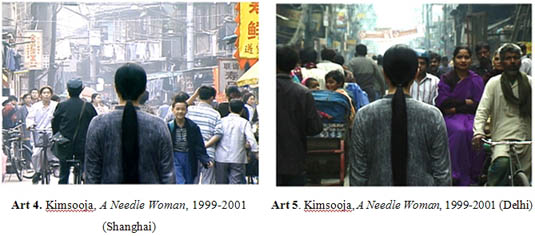
In this series, the artist becomes a needle, and mixes in pedestrians on the street. The backside of the artist can become an obstacle blocking the view, so at first, this may attract the viewer’s attention, but as time goes by, the viewer will soon be able to see pedestrians who pass through from the background. To capture the look of big cities, where millions of people walk by, Kimsooja videotaped the looks of big cities like Tokyo, Shanghai, Delhi, New York, Mexico City, Cairo, Lagos, and London. She purposely excluded Seoul from those eight big cities, because Seoul was so familiar to her that she wouldn’t be able to distance herself from the streets and crowds of Seoul.
3. Bill Viola’s Works
In 2003, this museum collected Bill Viola’s, Observance and last year, we collected his works, Tristan's Ascension and Fire Woman, which were created by his inspiration from watching Wagner’s opera, Tristan and Isolde.
In 2004, Viola created a 4-minute video for the performance of Tristan and Isolde, which was directed by Peter Sellars. Subsequently in 2005, Viola modified and edited part of the video presented during the performance and added sound to the video in order to turn it into a work of art suited for museum exhibition. As a result, Tristan's Ascension and Fire Woman were created.
Bill Viola’s two pieces of video are scheduled to be featured as a special exhibition next year.
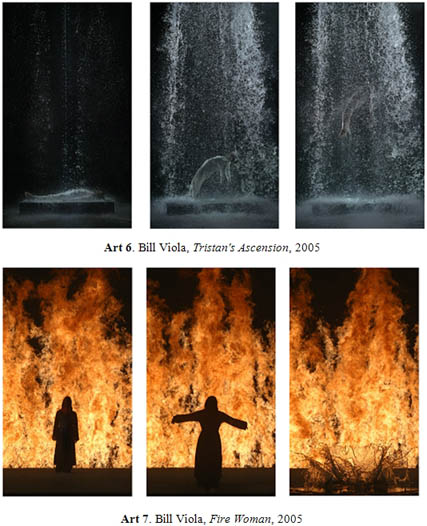
4. KWON Jin-kyu’s Sculpture
At the time when the museum held an exhibition of “Kwon Jin-kyu” in 2009, we had 21 pieces of his work, but all of them were from the late 1960s. As a result, we focused our efforts on discovering his early works, and were able to collect four pieces from the 1950s and one piece from the 1960s.
After he entered the Musashino Art University in Tokyo in 1949, he started his art activities in full force. He graduated from the school in 1953, but stayed on as a researcher and continued working on his art until 1959. The 1950s was the high time for contemporary art, so he absorbed various styles from the East and the West and created his own distinctive world of art. From among the five pieces collected last year, four of them were created during his stay in Japan.
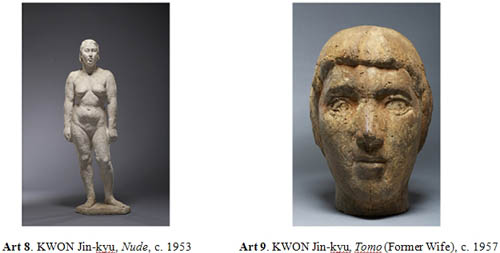
5. A Collection of the Early Works of LEE kun-yong and SUNG Neung-kyung
This museum was able to collect LEE kun-yong’s works, which show his distinctive art activities in experimental art, which was popularized during the 1970s. Previously, we had 5 pieces of his work, but we didn't have anything from the early 1970s, which is directly related to the Avant-garde Movement. In 2010, the museum collected his works of art entitled, Cloth - Orange, Blue, Green, which were featured during the exhibition of, “The 3rd Exhibition of Group Space & Time”(1974). This prepared a starting place for us in approaching his early world of art. We also collected the works of SUNG Neung-kyung, who was a member of‘Group Space & Time.’His work entitled, S. at Mid-Life, which was presented during an exhibition of“The 5th Indépendants”(1977), describes the stories of an individual who belongs to a society retrospectively manner.
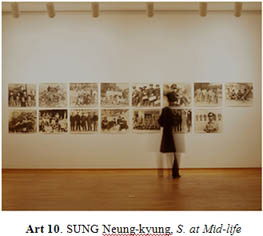
6. A Collection of Renowned Artists’ Representative Works: KIM Yong-ik, OH Won-bae, YOON Dong-cheun, KHO Nak-beom, HUR Jin
In April 2010, the museum held an exhibition called, “30th Anniversary of the Young Korean Artists 1981-2010”, as a means of reflecting on the past 30 years of Korean art. The artists who participated in this exhibition were young artists 30 years ago, and are now the veteran artists in Korea’s contemporary art. Their major works were featured during that exhibition. From that exhibition, this museum was able to collect works by KIM Yong-ik, OH Won-bae, YOON Dong-cheun, KHO Nak-beom, and HUR Jin. Most of these works were not created recently, but were created over a long period of time. These works were core pieces that served as a breakthrough in the development of their work.
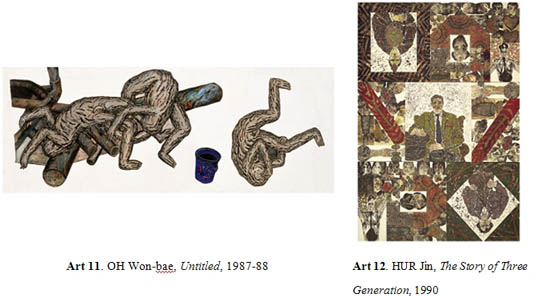
7. Collection of New Media Works: LIM Choog-sup, PARK Hyun-ki, CHUNG Bo-won
The museum collected the works of artists who expanded their world of art by utilizing new media. This museum has already collected their previous works (with strong sculpture and installation characteristics), but by collecting their video installations, we attempted to interpret and approach these artists from different angles. Furthermore, the museum collected works by PARK Hyun-ki, who presented Eastern values in the form of video; by KIM Bum-su, who created distinctive scenery using movie film; and by Debbie HAN, who raised doubt about people’s stereotypes and pre-conceived ideas.
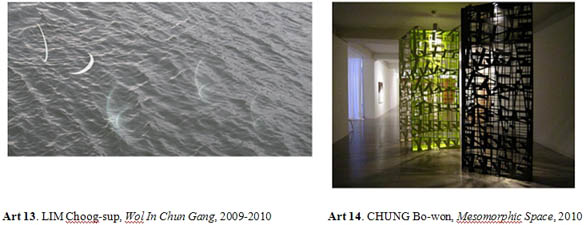
8. Donated Works by KIM Yung-zai and KIM Jom-son
The museum was able to acquire works by KIM Yung-zai and KIM Jom-son through donations. KIM Yung-zai, who is well known for‘mountain paintings,’personally visits famous mountains in Korea and abroad, and expresses them in his own visual language based on his inspiration. With these donations, the museum now has a comprehensive collection of several pieces, covering from early 1968 up until 2010, which allows us to see his entire art world in one view.
KIM Jom-son’s series of work entitled, Salamander, which was donated, shows a unique style of painting that looks like doodles drawn by a child. They were featured at the exhibition of “The 4th Indépendants”(1976). In 1975, when considering her extraordinary work entitled, Hong’s Family in Mourning, which satirically depicts a graduation ceremony held at Hongik University. This series of work gives us a glimpse of her experimental art world.
